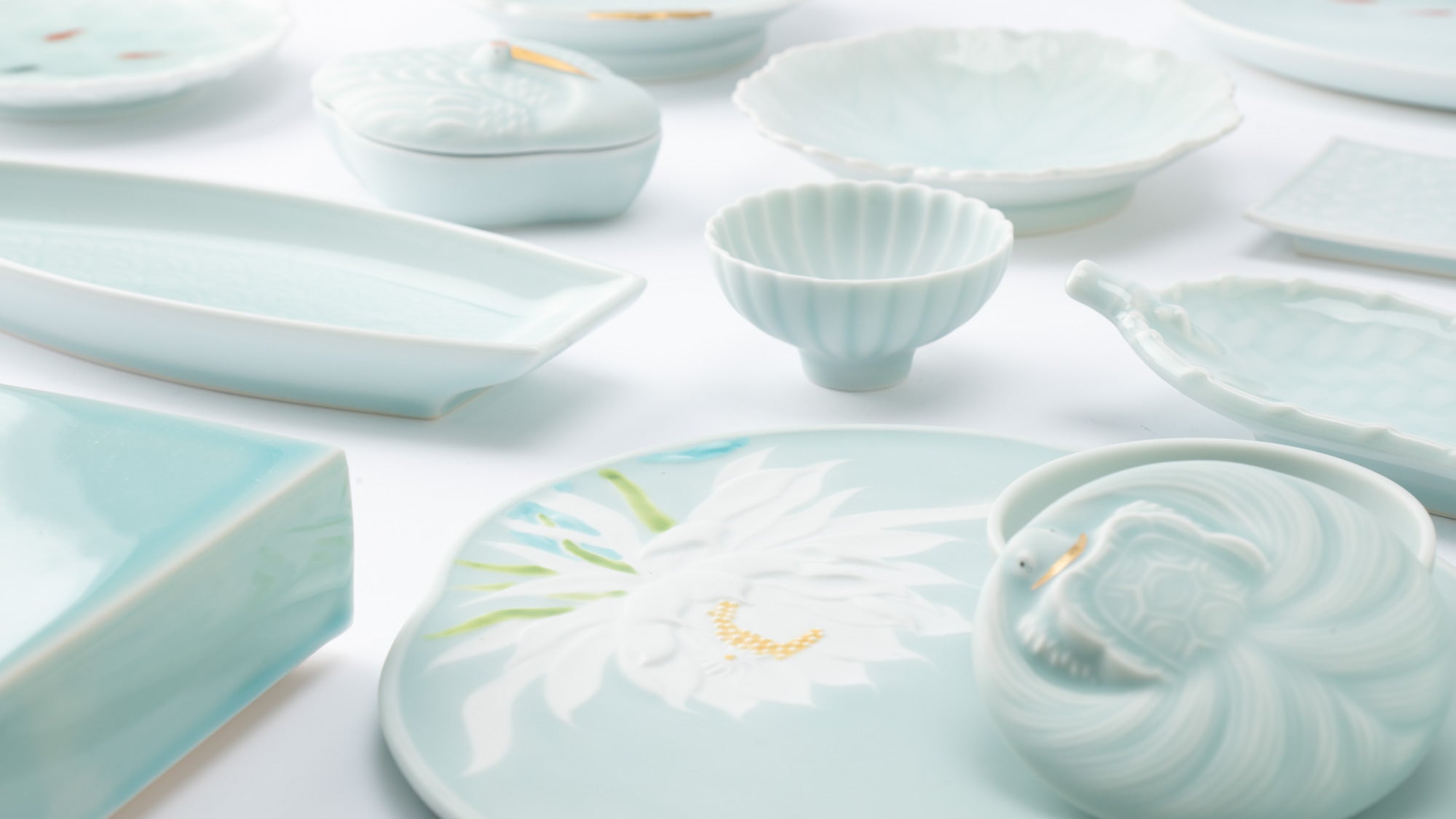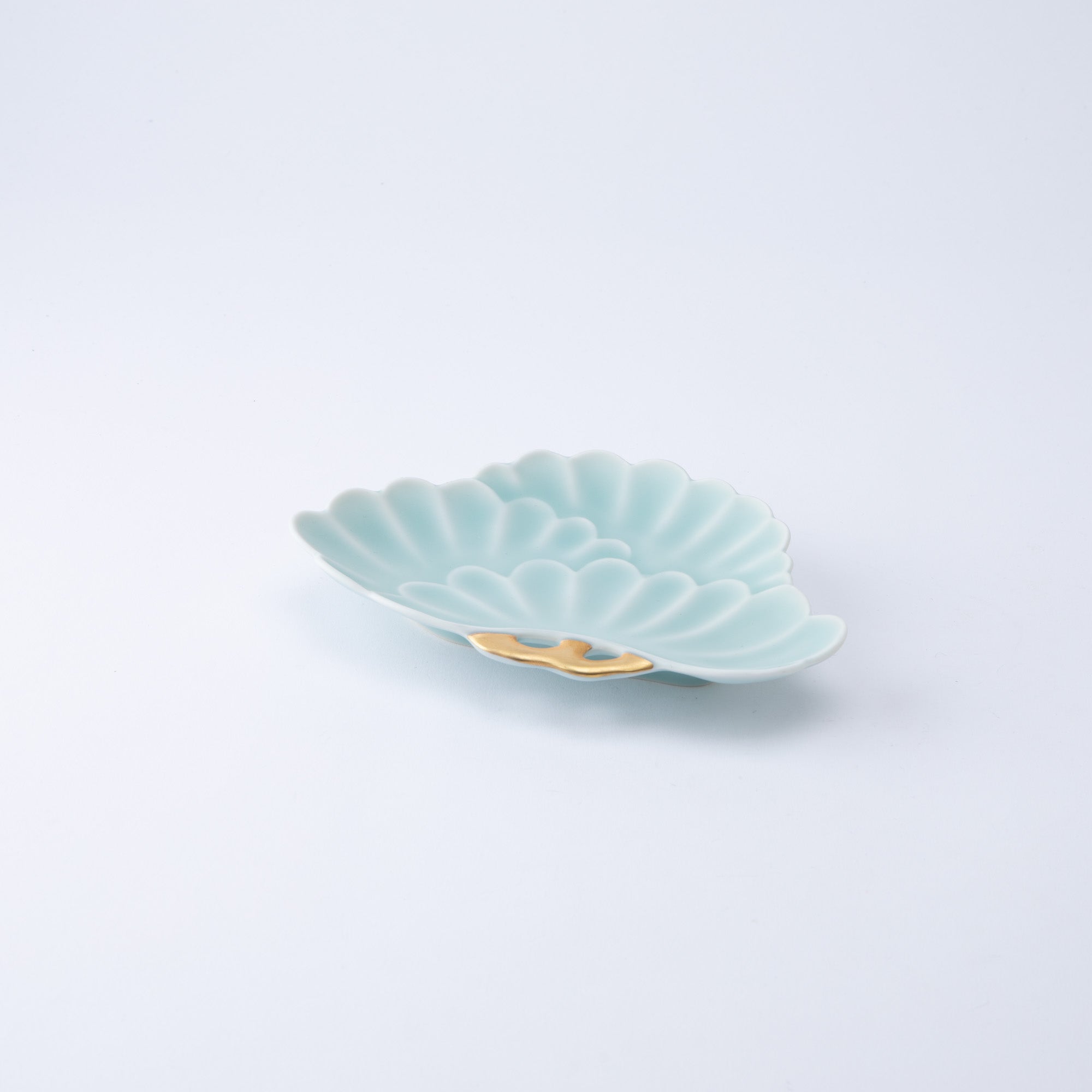
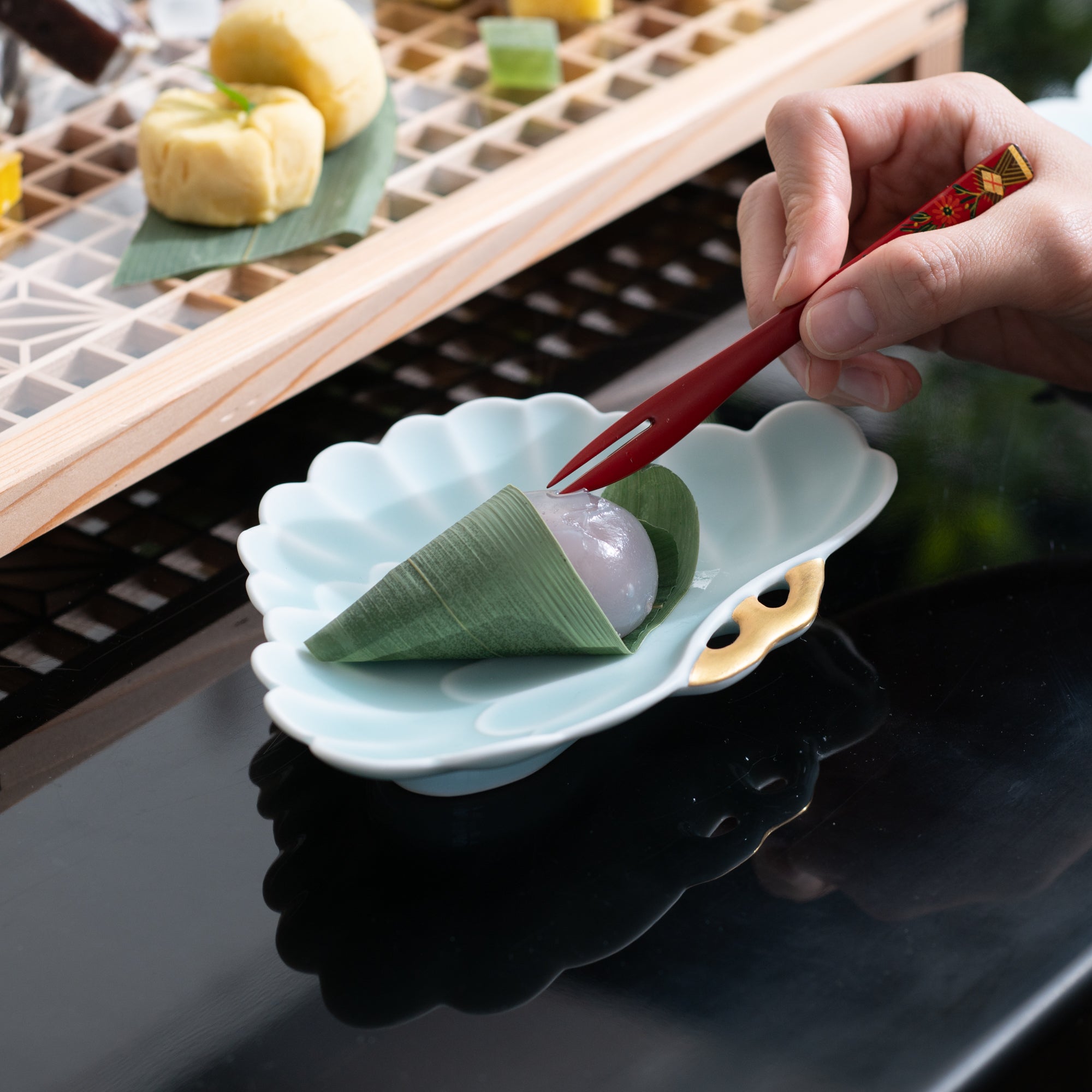
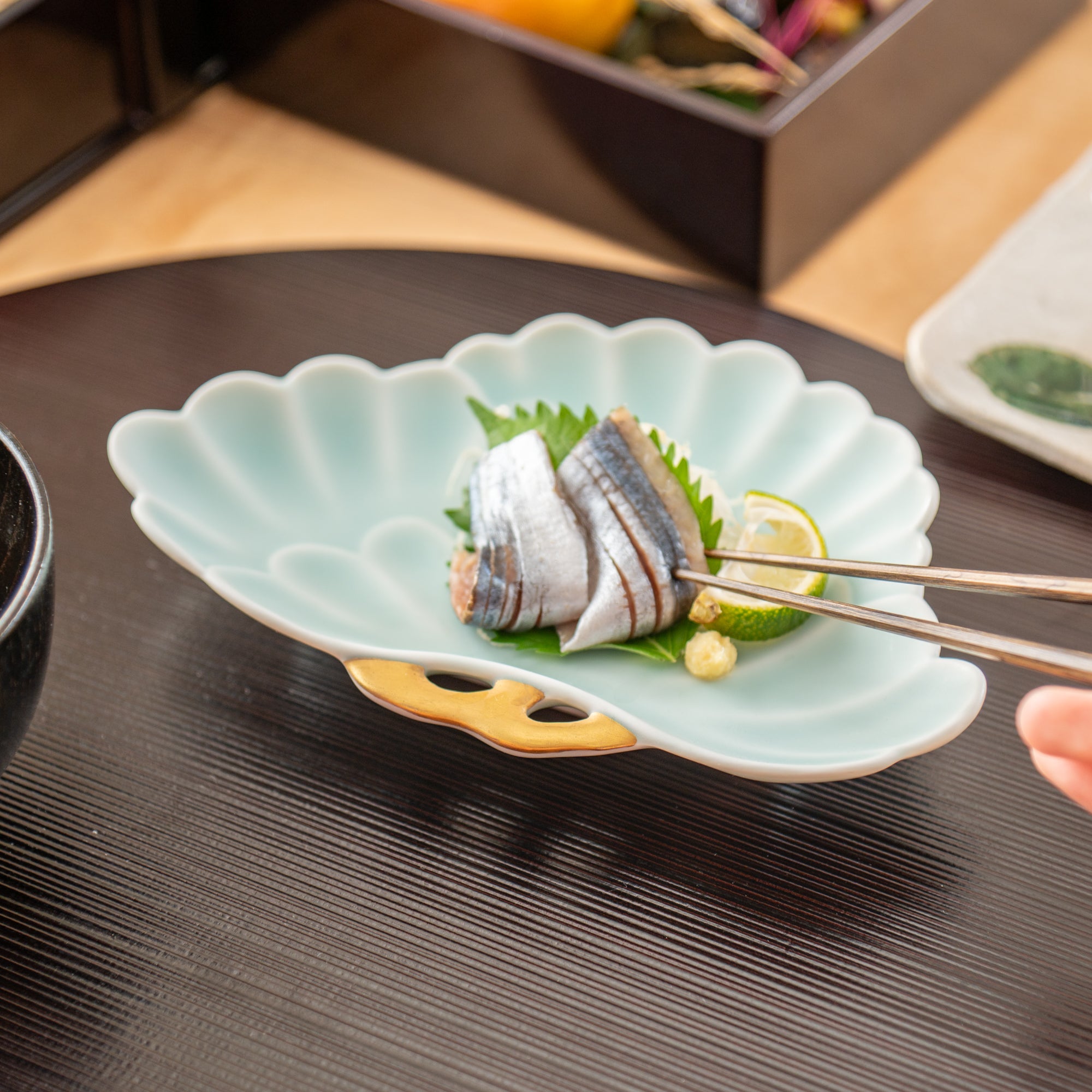
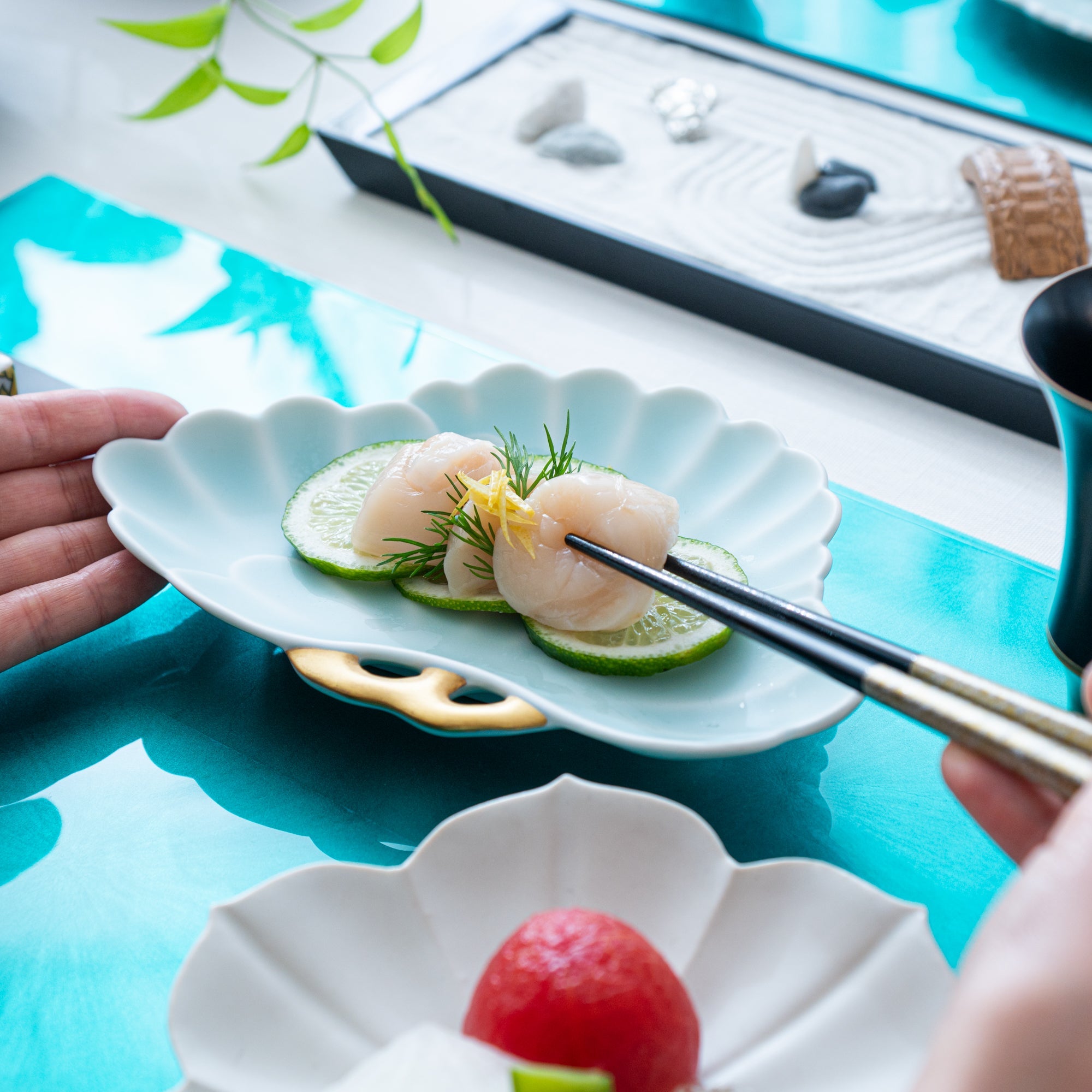

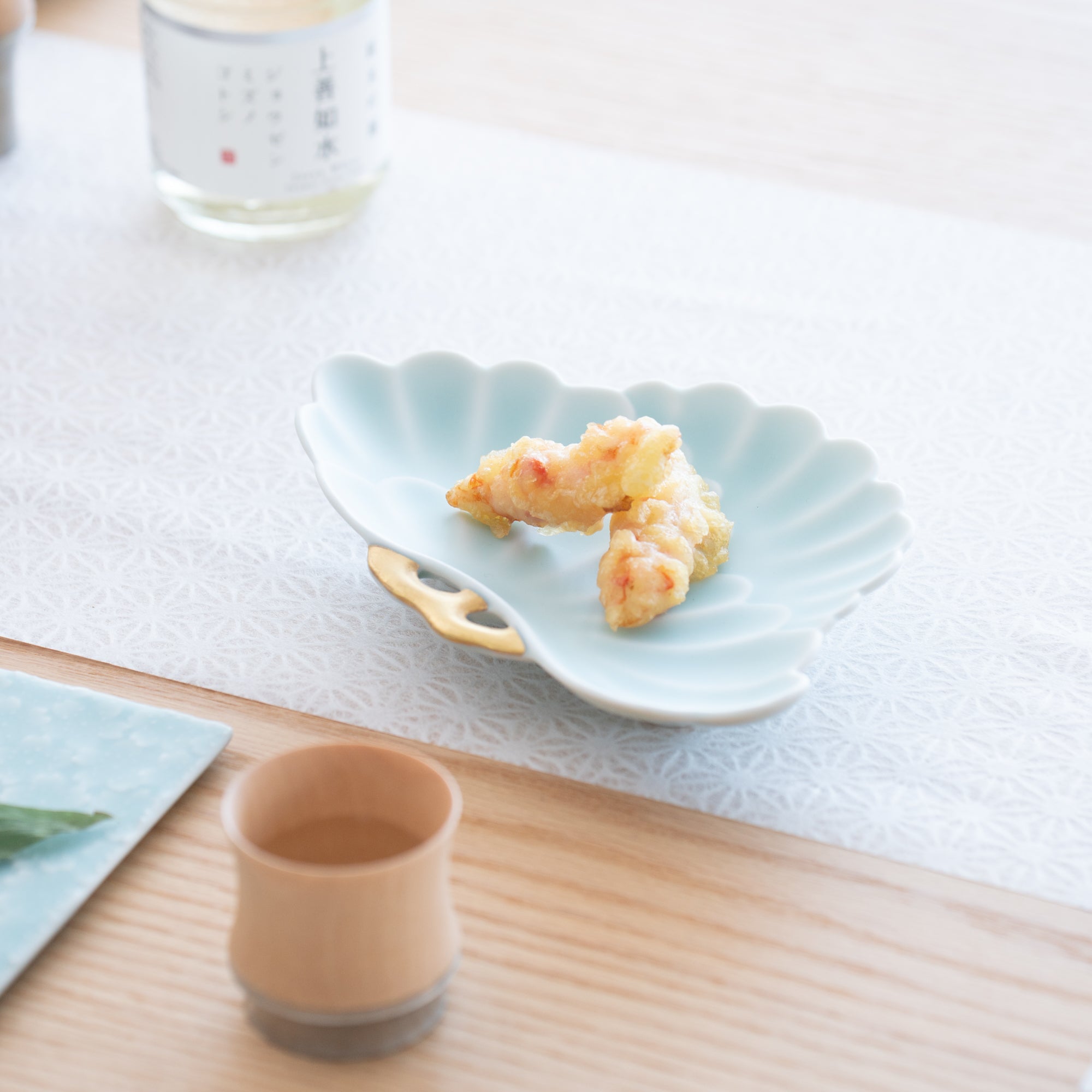
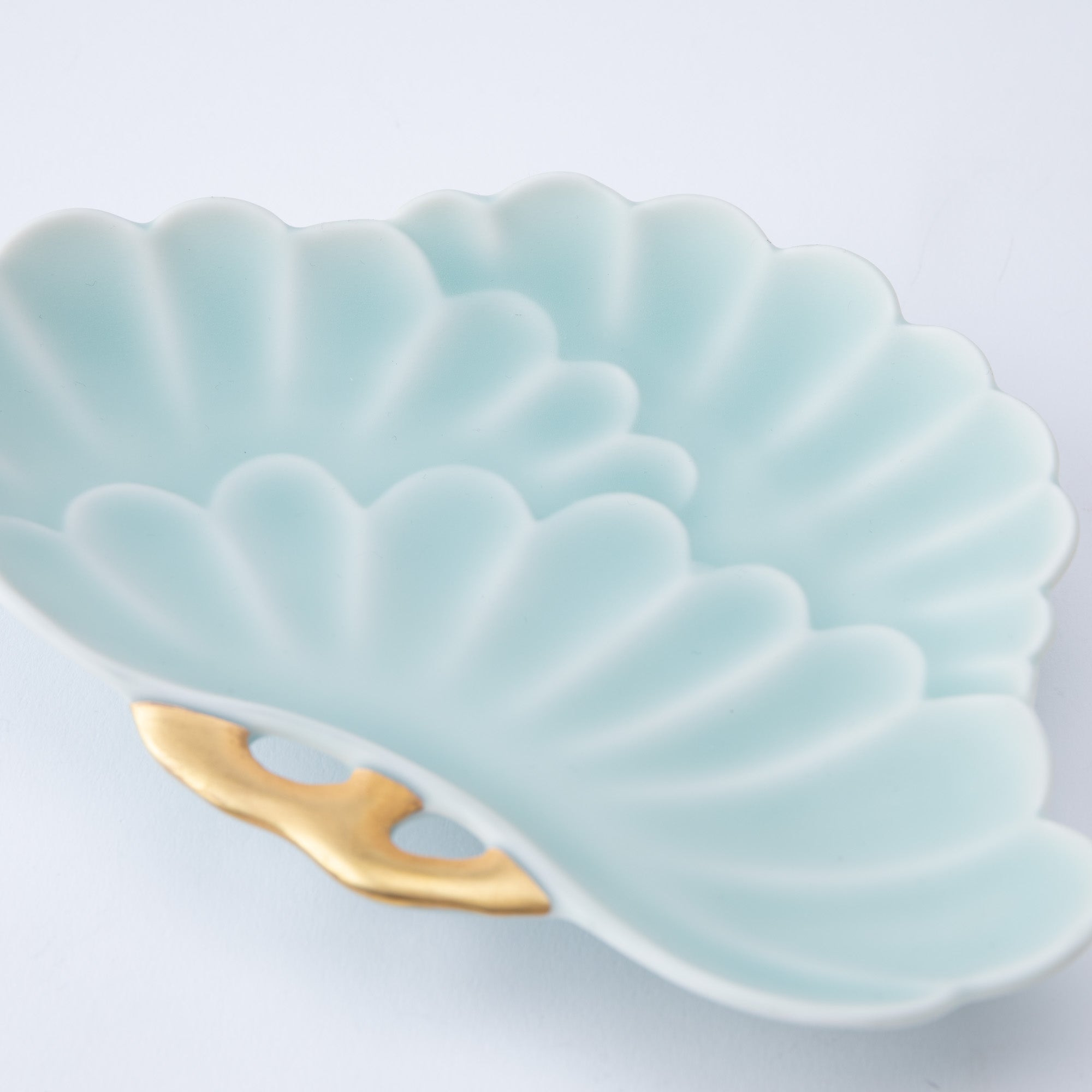
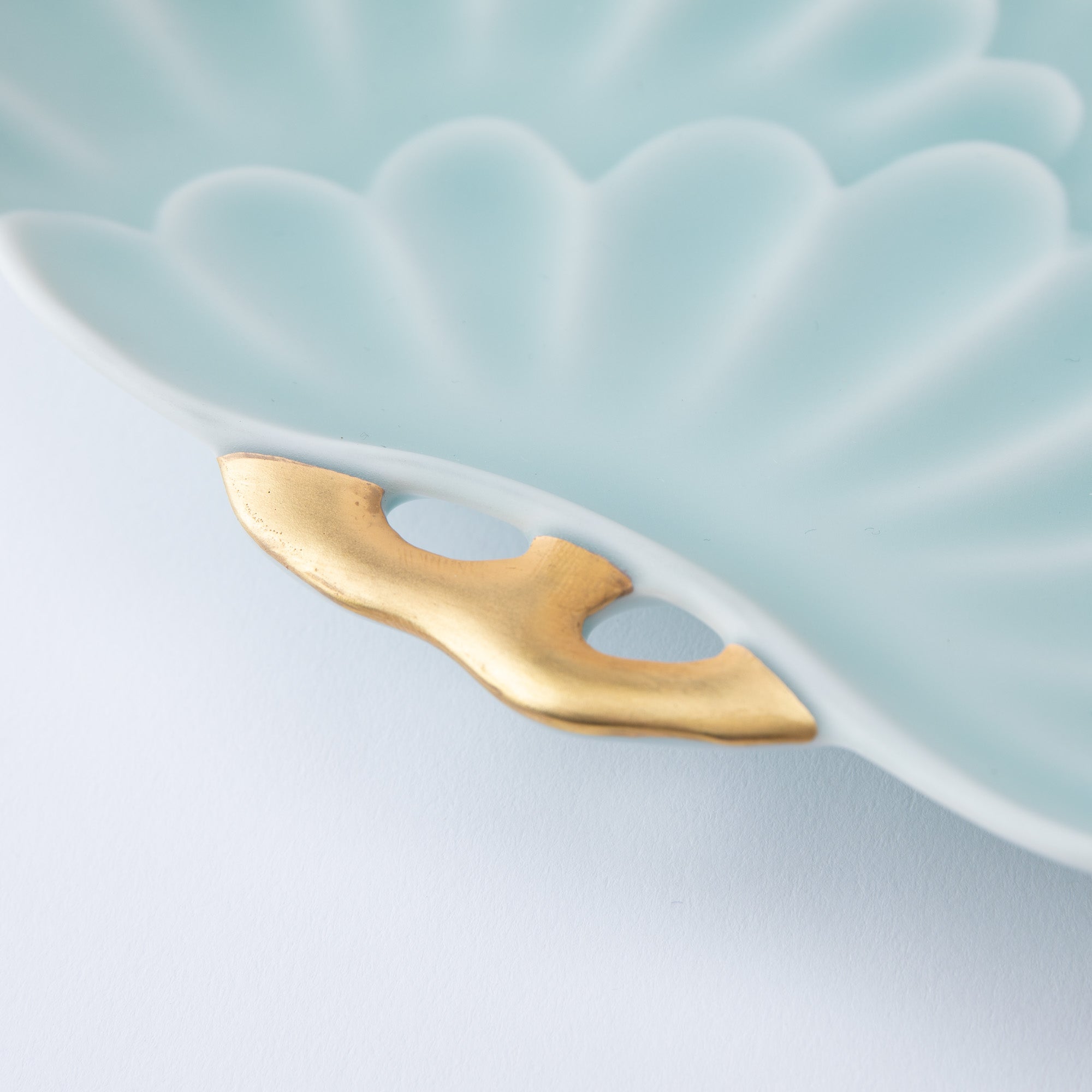
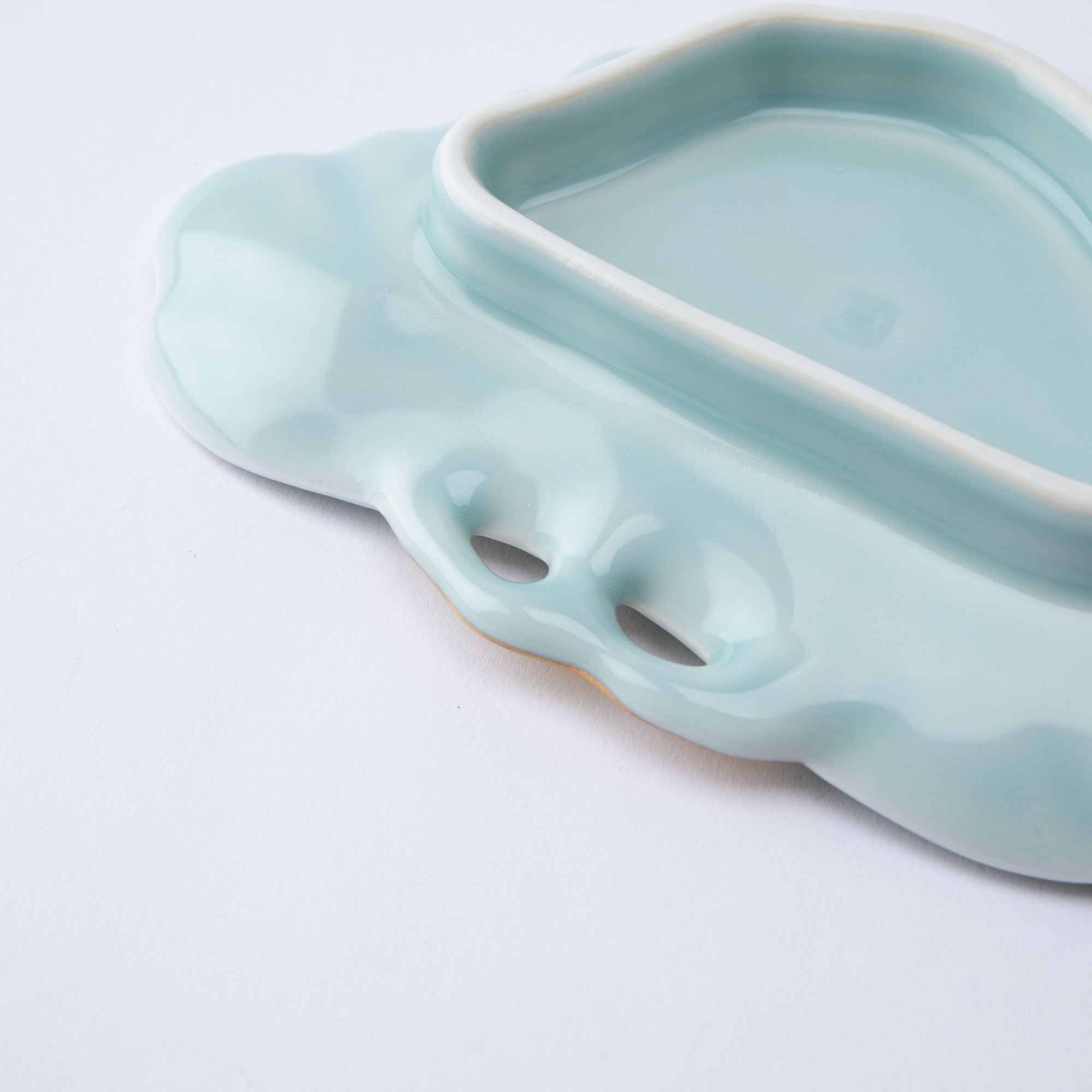
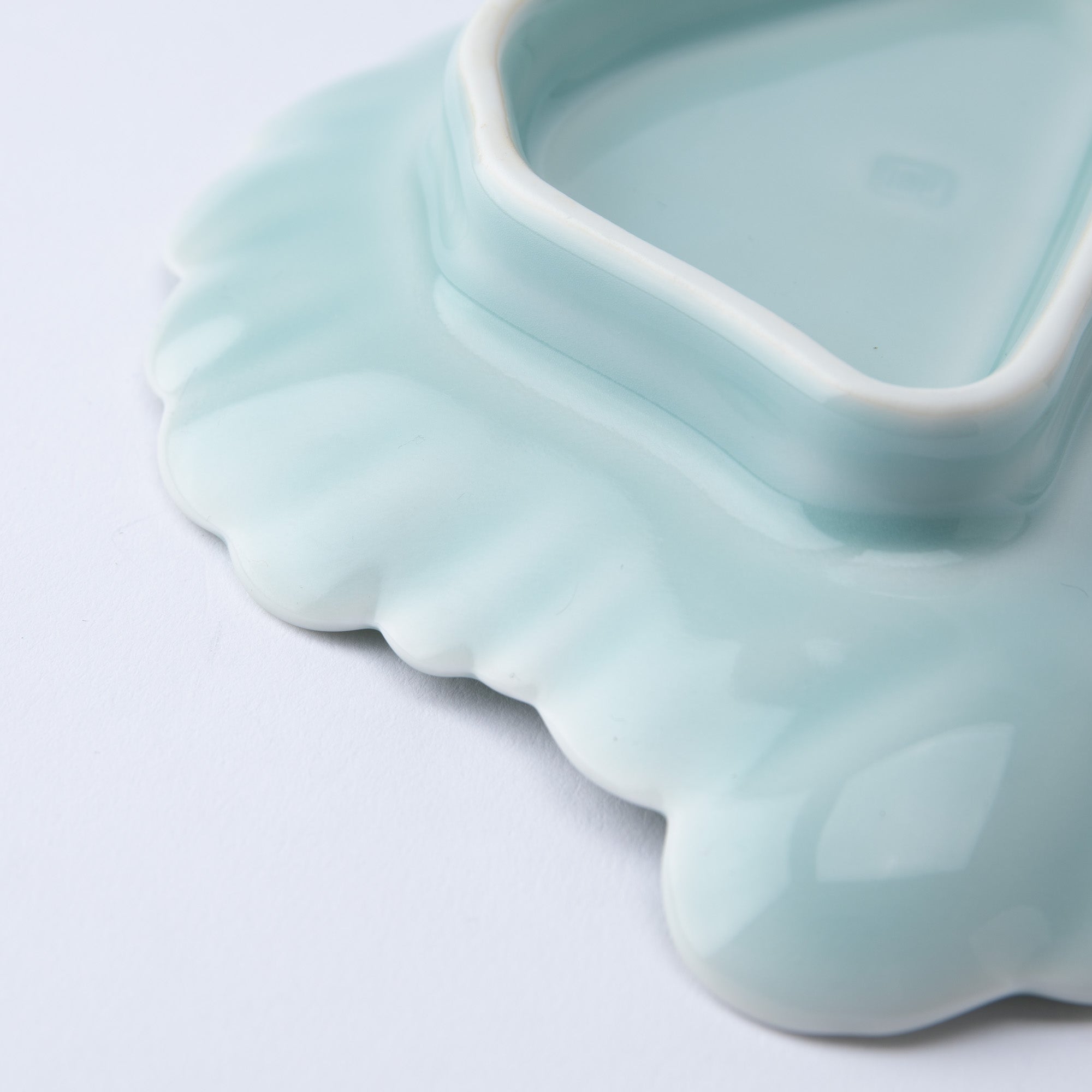
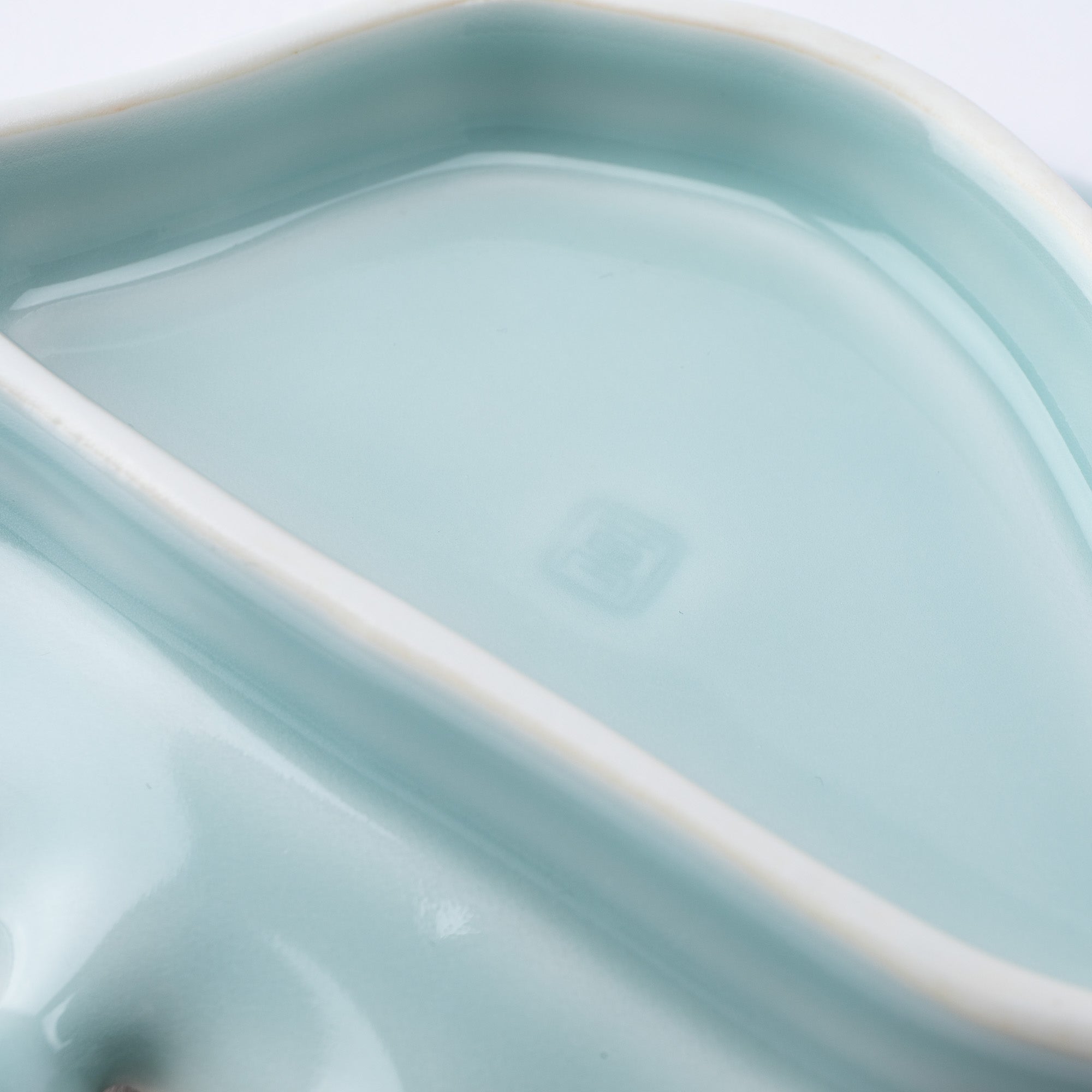

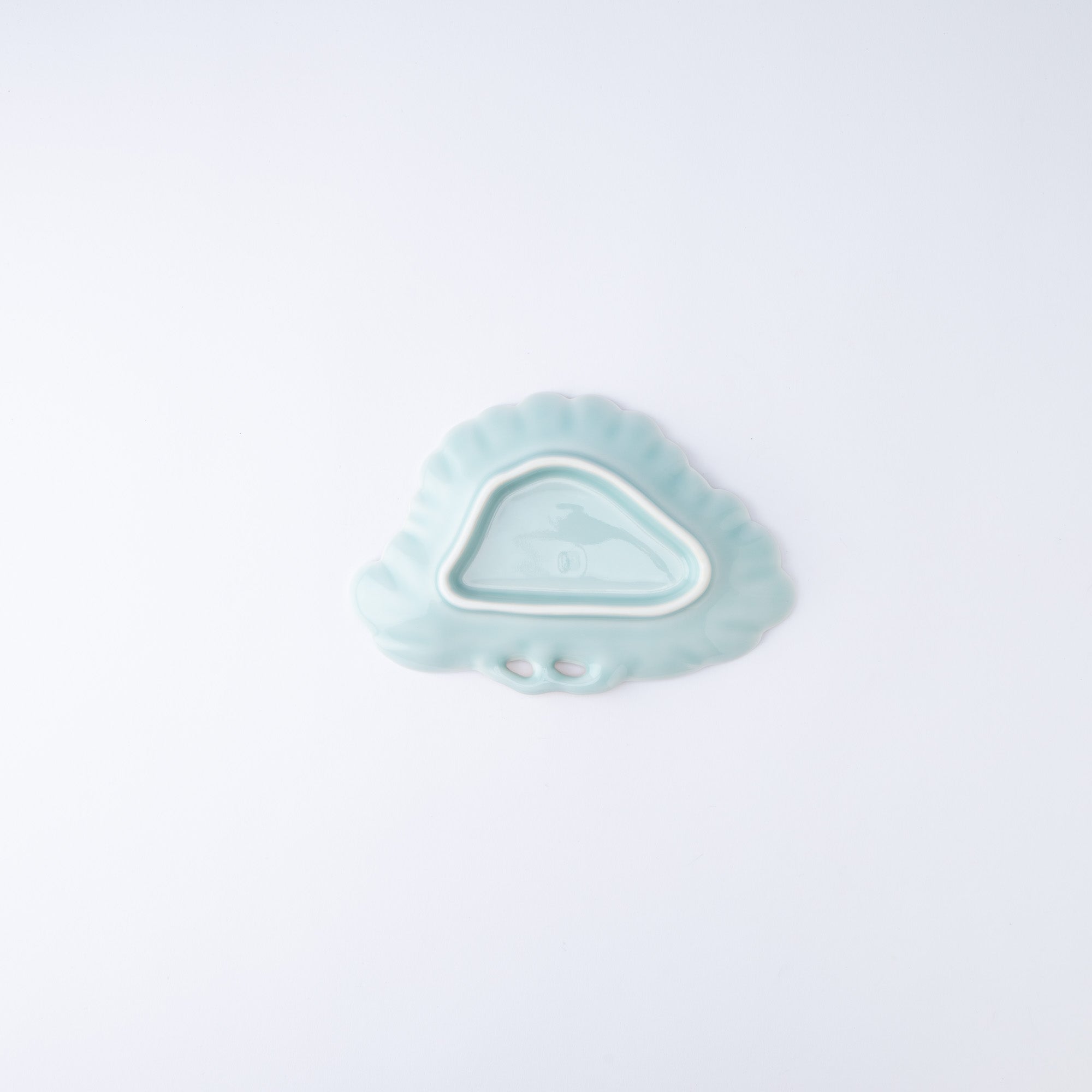
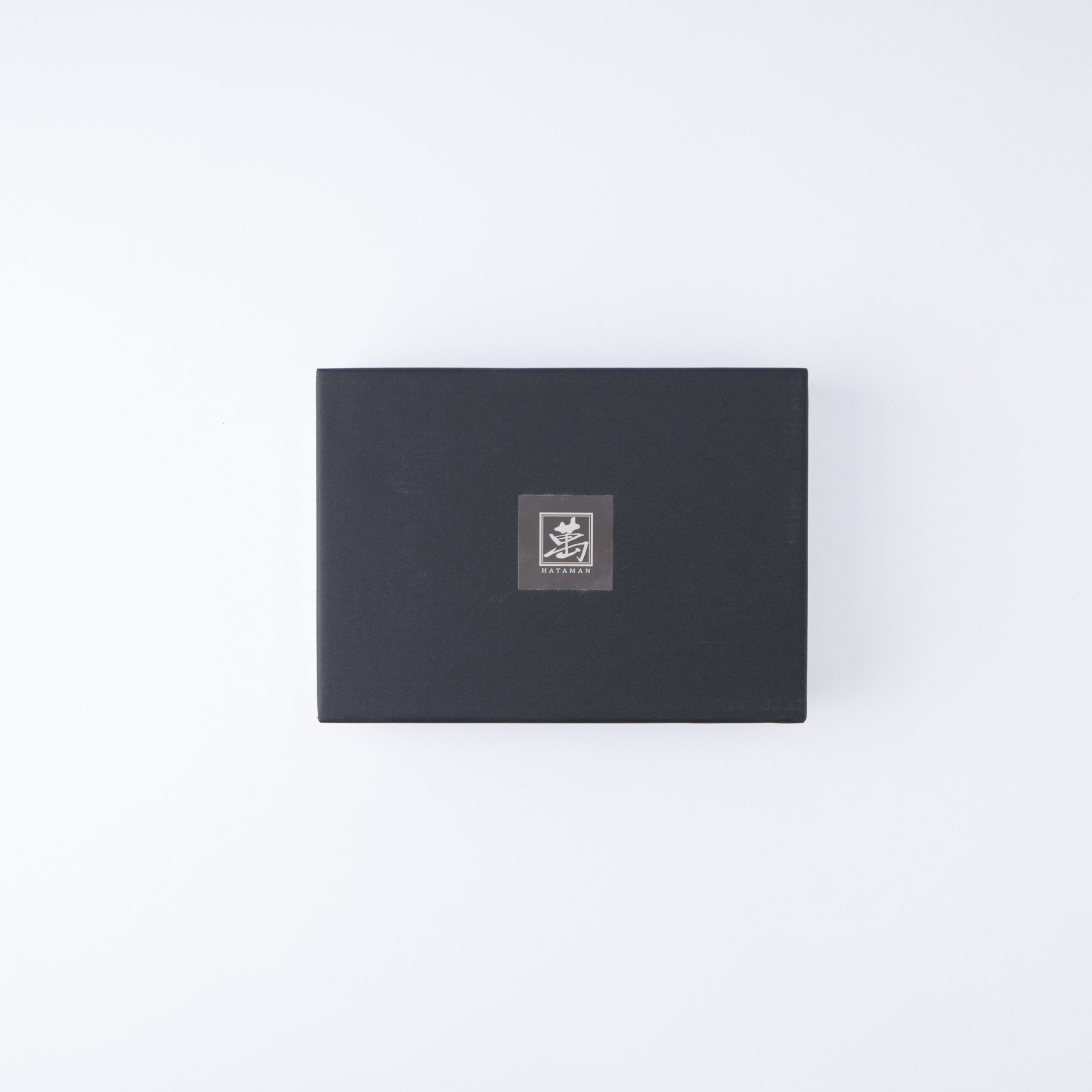
Moist Gold Pine Side Plate
Estimated Shipping Widget will be displayed here!
The matte celadon texture of this pine-shaped plate conveys tenderness the moment you touch it. Accented with gold, the combination with the pale blue is graceful and sophisticated.
The pine tree is an evergreen tree and is a symbol of eternal life. In addition, some pine trees are thousands of years old and are said to be auspicious because they are associated with immortality and longevity.
With its height and unique shape, the plate is an eye-catcher on the table. It brings a refined touch to your table, perfect for serving delightful sweets and small appetizers.
DETAILS
| Quantity | 1 |
| Size |
L 14 cm (5.5 in) x W 19.3 cm (7.6 in) x H 3 cm (1.2 in) |
| Material | Porcelain |
| Package Type | Paper box |
| Microwave | No |
| Dishwasher | Yes |
Maker / Brand
Hataman Touen inherits the rich history and techniques of Imari Nabeshima ware, a tradition spanning 370 years, while embracing the spirit of Japanese culture that enriches the heart and soul. They aim to embody Japanese aesthetics in a modern context and share their story and products with the world.
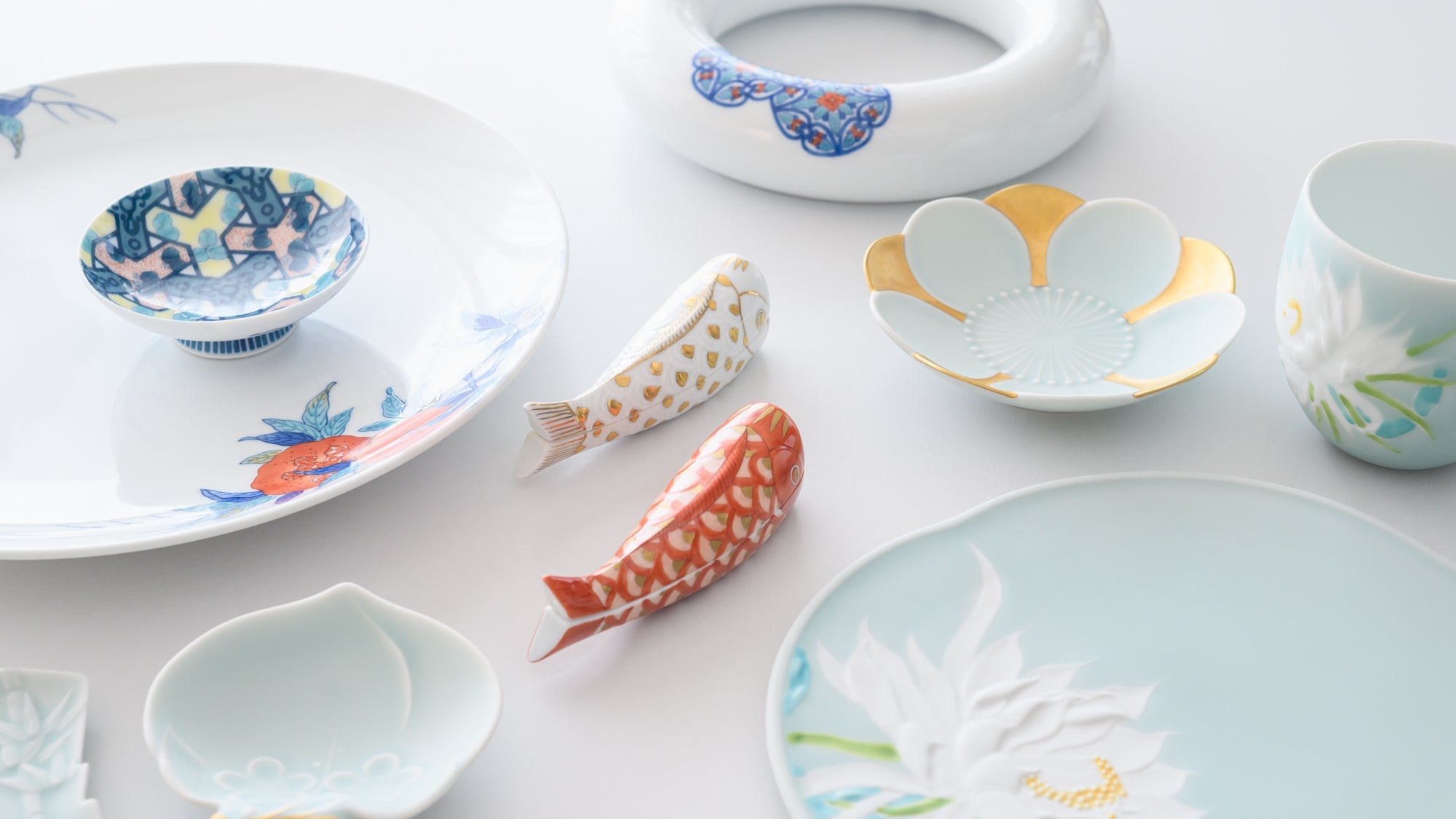
Crafts
Nabeshima ware is a type of porcelain crafted at the meticulously managed Nabeshima domain kiln. This kiln, which operated as a government-run project under the direct supervision of the Saga Nabeshima domain, flourished during the early Edo period (1603–1868 CE).
For approximately 250 years, Nabeshima ware was reserved solely and exclusively for shoguns and feudal lords, with the kilns producing exquisite pieces in styles like iro-Nabeshima (overglaze enamel), ai-Nabeshima (sometsuke), and Nabeshima seiji (celadon). After the feudal system ended, the kilns were privatized, welcoming new potters and giving rise to what is now known as Imari Nabeshima ware.
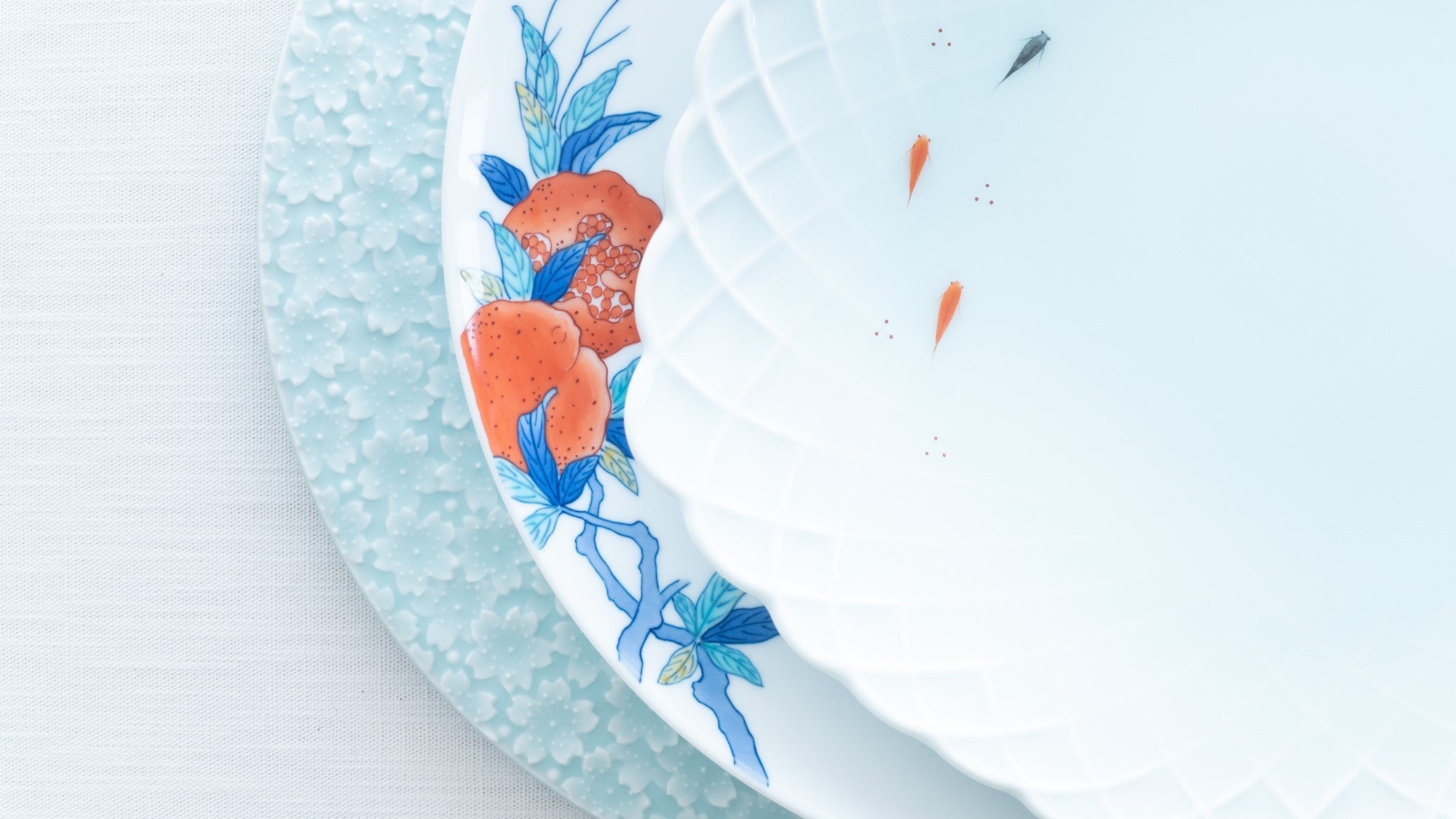
Choose options














Side Plates
Bring a feeling of quality to your table with our collection of Japanese side plates, expertly crafted by artisans from all across Japan. A key element of an authentic Japanese table setting, the small plates in our selection are curated to fit any aesthetic, from cute and bright to classic and refined. These dishes showcase appetizers, snacks, breads, sweets, and side dishes like tofu, salad, or even slices of fish with ease and style.
This category features plates with diameters ranging from 13–20.9 cm (5.1–8.2 in).

Celadon
Celadon porcelain originated in China and was introduced to Japan by the 10th century. Among the aristocratic classes at that time, celadon wares from China were regarded as the finest imported goods. They adored its mysterious blue and named it "secret-color."
Production of celadon ware began in the Hizen region, the northwestern part of present Kyushu in the early Edo period (1603 CE - 1868 CE), and the technique was later passed on to Kyoto and nearby areas. In 1957, the craft technology was designated a national intangible cultural asset. Celadon continues to be cherished and crafted by many potters and artisans today.
